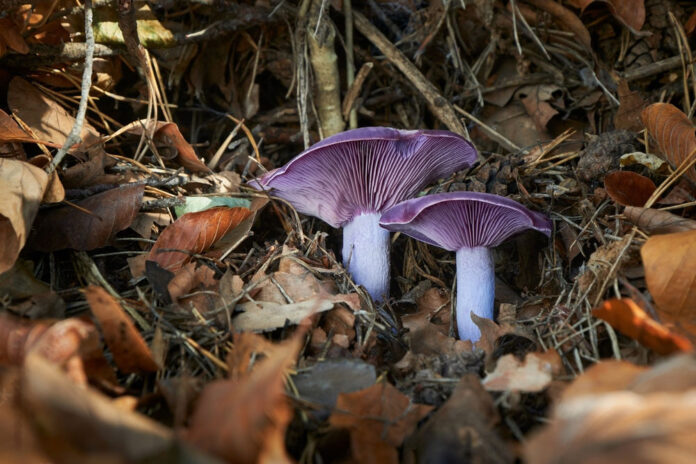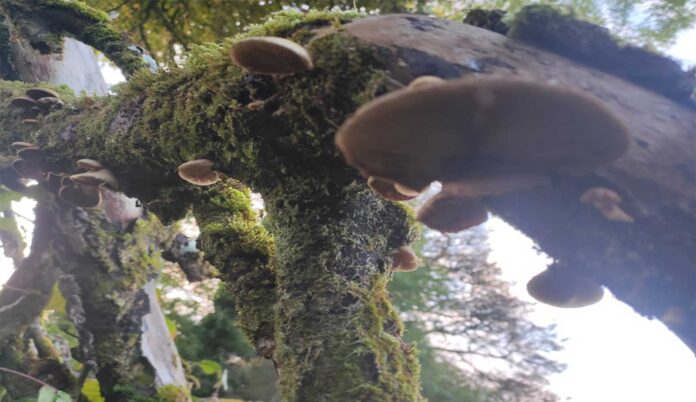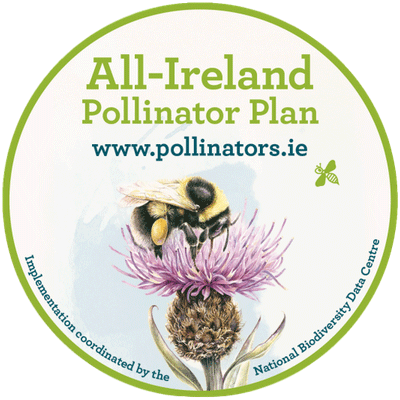The Scarlet Elf Cup: A Tiny Treat Hiding in Plain Sight
While strolling through the damp woodlands or peeking beneath fallen leaves, you might stumble upon a sight that seems straight out of a fairytale – a cluster of vibrant red cups nestled amongst the decaying debris. These captivating miniature goblets are the Scarlet Elf Cup (Sarcoscypha austriaca), also known by a variety of charming names like scarlet elf cap, red cup, scarlet cup, moss cups, and even fairies’ baths. This fascinating fungi with a surprising amount to offer, adds a touch of whimsy to the winter woods.
A Splash of Colour in the Winter Woods
Unlike most fungi that emerge during the warm, wet months, the Scarlet Elf Cup thrives in the cooler temperatures of winter and early spring. Its bright red, cup-shaped fruiting bodies erupt from deadwood, particularly fallen branches of deciduous trees like hazel, elm, and willow. Often partially buried in moss or leaf litter, these tiny treasures can easily be overlooked. But for the keen observer, the Scarlet Elf Cup adds a vibrant splash of colour to the sometimes-sombre winter landscape.
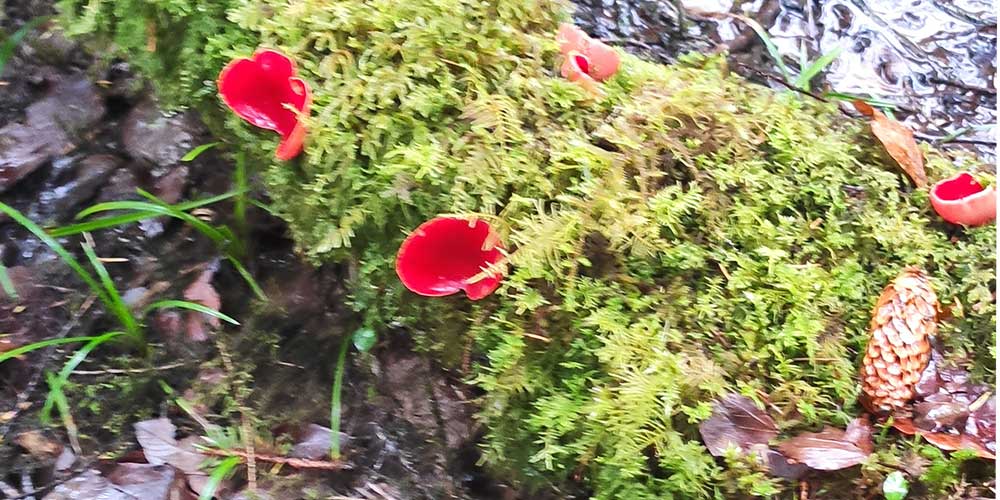
Beyond Beauty: The Secret Life of the Scarlet Elf Cup
The Scarlet Elf Cup might appear delicate and decorative, but beneath its captivating exterior lies a complex life cycle. This fungi is a decomposer, playing a crucial role in breaking down dead wood and returning nutrients to the forest floor. Its delicate hyphae (thread-like filaments) weave through the decaying wood, extracting essential nutrients and contributing to the decomposition process.
Fungi Feast
The Scarlet Elf Cup has a long and somewhat conflicting history when it comes to edibility. While some sources list it as inedible, others consider it a potential culinary curiosity. However, it’s important to exercise extreme caution before consuming any wild fungi. Misidentification can have serious consequences. If you’re curious about the taste of the Scarlet Elf Cup, it’s best to consult with a fungi expert for guidance. Interestingly, for the adventurous eater, Scarlet Elf Cups have a subtle, earthy flavour – fungal, with perhaps a hint of earthy or beetroot. Though the texture isn’t quite typical of shop-bought mushrooms, they do indeed cook well – either fried or added to stews.
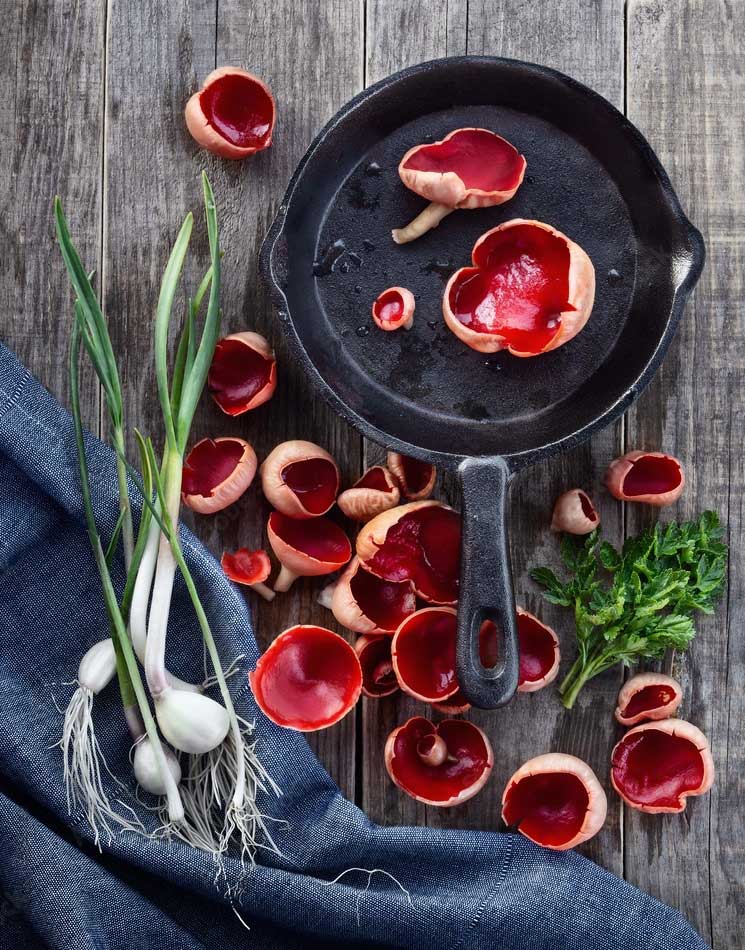
Uses of Elf Cup Fungi: Beyond the Fairytale
While not considered a universal delicacy by the average supermarket-type person, the Scarlet Elf Cup also has uses beyond its ecological role.
- Medicinal Applications: The Oneida Native Americans have a history of using the Scarlet Elf Cup medicinally. It was believed to help stop bleeding and was placed under bandages and on the navels of newborns to promote healing. It’s important to note that there is limited scientific evidence to support these claims, and consulting an expert is crucial before using any wild fungi for medicinal purposes.
- A Touch of Whimsy: Believe it or not, the Scarlet Elf Cup once graced dinner tables! In past times, these tiny cups were incorporated into decorative arrangements with moss and leaves, adding a touch of whimsy to table settings.
Mythology and Symbolism: A Sip from the Fairy Goblet
The Scarlet Elf Cup’s vibrant colour and miniature size have captured the human imagination for centuries. In European folklore, these scarlet cups were said to be the drinking vessels of wood elves, who sipped the morning dew from their delicate rims. This charming association adds to the mystique of the Scarlet Elf Cup, blurring the lines between reality and the fantastical.
A Part of the Delicate Balance: Respecting the Scarlet Elf Cup
The Scarlet Elf Cup is a vital part of the woodland ecosystem. While it may be tempting to collect these miniature marvels, it’s important to admire them in their natural habitat. Leaving them undisturbed allows them to complete their life cycle and continue their role in the decomposition process.
So, the next time you’re exploring the winter woods, keep an eye out for the Scarlet Elf Cup. This tiny fungi might not be a towering giant, but it’s vibrant colour, unique life cycle, and ecological importance make it a true wonder of the natural world, and perhaps even a surprising addition to your next culinary adventure (with proper caution and guidance, of course!).



